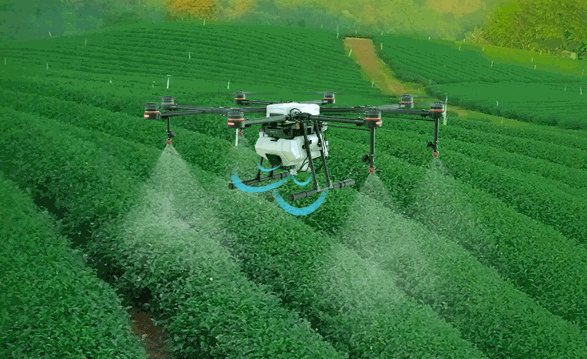

Over the last fifteen years, drone technology for agriculture has experienced a huge leap forward, making it easier to collect more data in less time without loss of precision or accuracy.
As this technology has developed and grown, so has the number of options on the market. This increase has left many people undecided about which one to choose: RGB or multispectral?
RGB Sensors: Population Census
RGB sensors capture the colours red, green and blue (hence RGB). These colour bands are the bands that the human eye is sensitive to seeing. As a result, the image obtained with RGB bands creates an image that looks almost exactly like what we see naturally.
What does this mean for agriculture? An RGB camera provides an image of your field. When the images from the sky are stitched together, they form an orthomosaic map and provide an aerial view showing the state of your field. This view is very useful for population counting and helps you to determine how many plants have emerged or how many have matured. This data is extremely valuable for making on-site observations and helps to detect problems, input geo data into GPS and solve problems efficiently.
Modern RGB sensors can be equipped with near infrared (NIR) sensors that are invisible to the human eye. Thanks to NIR capabilities, RGB sensors can now calculate the Visible Atmospheric Resistance Index in Plants (VARI) and provide information on plant health. VARI is not the most precise index as it is influenced by factors such as cloud cover or shading, but it offers more information than a traditional RGB camera, taking plant health one step further.
Multispectral Sensors: Health Analyses
When it comes to assessing plant health, multispectral sensors are coming to the fore. These sensors are designed to capture light waves that are invisible to the human eye. Although multispectral sensors are available in different configurations, we will generally focus on multiband sensors.
Multiband multispectral sensors usually collect between five and ten bands of light, and these bands usually include the same ones as RGB sensors. They also include the NIR and, most importantly, the Red Edge. The Red Edge is a wavelength of light that fits between the red and NIR bands, between 670-760 nanometres.
Compared to RGB sensors, multispectral sensors capture how light reflects off plant leaves. This reflection varies depending on the amount of chlorophyll in the leaves and provides an important indicator for understanding plant health. Using key indices such as the Normalised Difference Vegetation Index (NDVI) and the Normalised Red Edge Difference Index (NDRE), multispectral sensors can provide information on
- How plants respond to inputs and therefore drive application decisions
- Vegetation helps to measure growth rates and plant maturity
- Helps to identify plant stress and determine focussed intervention strategies
- Soil health, ability to understand how plants take up nutrients
- Drought potential helps to manage water inflows and formulate irrigation strategies
RGB or Multispectral? Which is the Winner?
Now that we’ve looked at the differences between RGB and multispectral sensors, the question is: which one wins? Unfortunately, the answer is not definitive – a common theme in agriculture.
The choice depends on your specific goals and how you plan to use the data you collect. For example, if you aim to monitor the performance of a hybrid seed from the moment it is sown to the moment it is harvested, an RGB sensor might be a better option. It offers a clear visual representation of field conditions throughout the season.
On the other hand, if you want to assess soil fertility or the performance of inputs such as fertilisers, herbicides or fungicides, a multi-band multispectral sensor may be more suitable. As these applications rely on understanding plant health at different stages of the season, monitoring at the plant level is vital for validation of results and optimisation.
Beyond the ability of RGB and multispectral sensors to generate maps and images, both sensor types offer the opportunity to provide a deeper understanding of field conditions. Using machine learning platforms, analyses such as Agrovech’s Stand Count, Vegetation and Cob Count provide quantitative insights into performance and enable faster validation of decisions and comparative data points for continuous analysis.
To summarise, the choice between RGB and multispectral can create different winners depending on the specific needs of the user and the programme. Understanding your goals and their root causes is essential to making an informed choice.
Get in touch with us!
Do not hesitate to contact us to learn more about the latest developments in agricultural technologies and to get detailed information about the products and services offered by Agrovech. You can visit our website at www.agrovech.com or use the contact details below to contact us directly:
- E-mail: [email protected]
- Address: Sakarya Teknokent Esentepe Mahallesi Akademiyolu Sokak Technology Development Zones
Building:2 – ROSEM No:21
As Agrovech, we continue to offer smarter, more sustainable and more efficient solutions in the agricultural industry. We are happy to help you and contribute to the agriculture of the future. Contact us to offer customised solutions for your needs and let’s shape the future of agriculture together!

